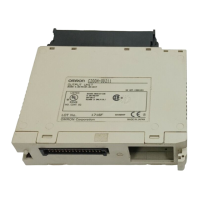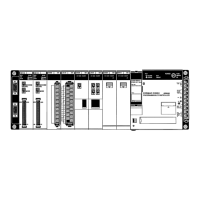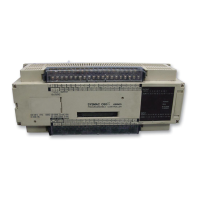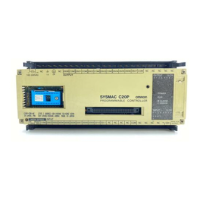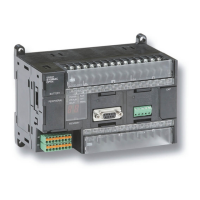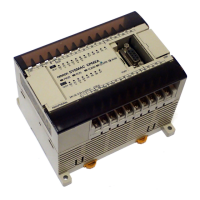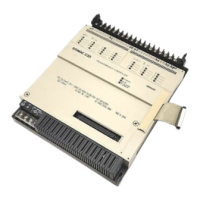264
Flags ER: Indirectly
addressed
DM word is non-existent. (Content of
:
DM word is
not BCD, or the DM area boundary has been exceeded.)
C, and/or N are not within specified values.
Example 1: Input Interrupt This
example shows how to unmask a particular interrupt input. Input interrupt
subroutines will be executed when the CPU receives the corresponding inter-
rupt input, regardless of the location in the CPU’s cycle. These interrupts are
useful when using program sections of uncertain length, such as event pro-
grams.
All
input interrupts are masked at the start of operation, and the desired interrupt
input
is unmasked using INT(89) with N=000
and C=000. As shown in the follow
-
ing
diagram, the subroutine would be executed if there
were an input from input
interrupt 00 when that interrupt input was unmasked.
LD 25315
INT(89) 000
000
#00FE
SBN(92) 00
RET(93)
END(01)
Main
program
Subroutine
Main program
Interrupt from
interrupt input 00
Only interrupt input
00 is unmasked.
First Cycle Flag
Note
Depending on the setting of DM 6621 in the
PC
Setup, Host Link servicing, Re
-
mote
I/O servicing, Special
I/O Unit servicing, and individual instruction execu
-
tion will be completed before the subroutine is executed. Refer to page
255 for
details.
This example shows how to set the interval between scheduled interrupts.
Scheduled
interrupt subroutines will be executed
at fixed intervals, regardless of
the
location in the CPU’
s cycle. This
interrupt is useful for program sections such
as regular monitoring programs.
Example 2: Scheduled
Interrupt
Subroutines and Interrupt Control Section 5-23
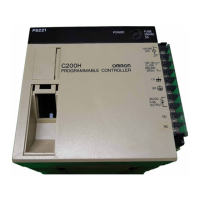
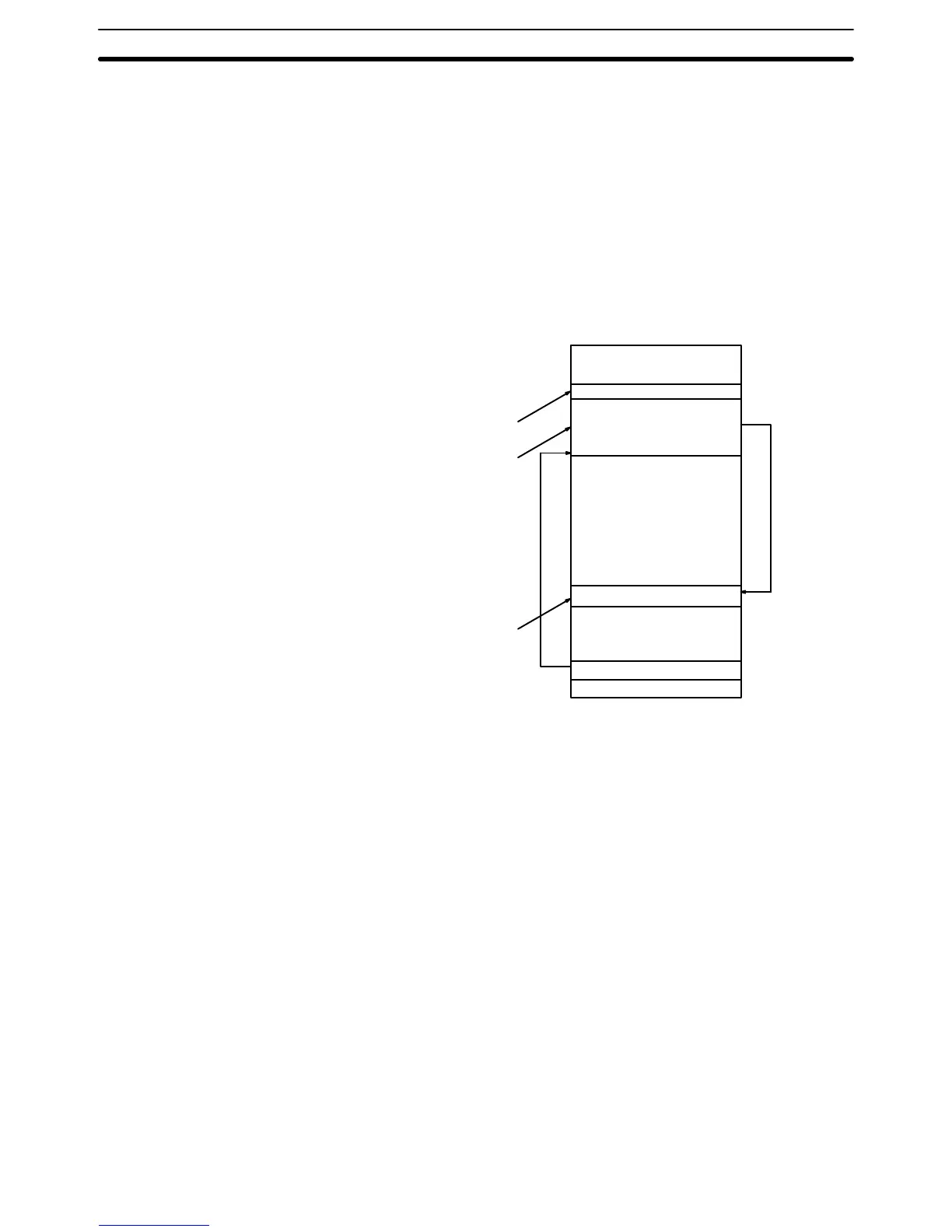